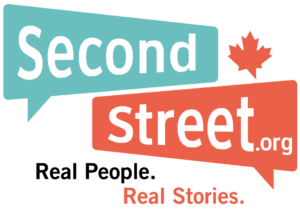Financial Post: Lose money selling coffee and doughnuts to Canadians? Some hospitals do.
Back in 2012, the National Post published an eye-popping headline: “Tim Hortons with $26/hour servers putting Windsor hospital $265K in the hole.” The same story noted that a government-run Tim Hortons at a hospital in Newfoundland and Labrador had also lost over $260,000 the year before. That’s right. They lost money. Selling coffee and doughnuts to Canadians.
SecondStreet.org recently decided to investigate hospital cafeteria losses right across the country and to do a followup on the aforementioned government-run Tim Hortons that made such an unlikely splash.
In the grand scheme of health-care spending, of course, this issue is pretty small. It’s still important, though. When hospitals lose money selling double-doubles, doughnuts and soft drinks, those are dollars that can’t be spent on providing services to patients. And there may be similar losses, maybe even larger ones, when they stray into other areas outside their core competencies.
When it comes to health care, all dollars matter. For instance, Alberta patient Jackie Herrera was told she would have to wait a year just to see a neurologist. So, while she was living with extreme pain and discomfort, her government lost millions covering losses at hospital cafeterias. Had some of those dollars been put towards providing care to patients, maybe Jackie wouldn’t have done what she eventually had to do — travel to Germany and pay for treatment out of her own pocket.
When COVID-19 emerged in Canada, governments across the country postponed thousands of surgeries, diagnostic scans and appointments with specialists. Already lengthy waiting lists grew even longer. In order to shorten those backlogs, governments will need to look under every stone to find savings. Ancillary services are a big, bleeding stone.
After filing over 120 freedom-of-information requests with health authorities across Canada, SecondStreet.org found dozens of facilities that lost money — more than $12 million in losses over a two-year period. Keep in mind this figure does not include data from Quebec or from several other health authorities elsewhere in Canada that provided incomplete information. For perspective, $12 million is roughly equivalent to the cost of providing MRI scans to an NHL arena full of people.
SecondStreet.org discovered that the Newfoundland and Labrador hospital that previously lost money through its Tim Hortons has since gotten out of the double-double game. Now a private firm runs the outlet and the losses have stopped.
In Ontario, as well, some progress has been made at the Windsor Regional Hospital. The facility went from three to two Tim Hortons kiosks; one earned $111,508 during the two-year period we examined while the other lost $74,775 — which begs the question: why not cut your losses and shut down the one that’s losing money?
SecondStreet.org also discovered a third hospital in Canada that has been running a money-losing Tim Hortons. This one is at the Saint John Regional hospital in New Brunswick and it lost $278,734 from 2017-19.
Whether we’re talking about a government-run Tim Hortons or a regular hospital cafeteria the losses are likely due to the overly generous wage structure in government.
As the CEO of Eastern Health in Newfoundland and Labrador explained back in 2012: “… we charge you $1.94 for that large coffee, but we insist that the staff who are pouring that coffee are Eastern Health staff, and they get paid $28 an hour, and no Tim Hortons pays that.”
A second reason why governments often lose money through their hospital cafeterias comes down to core competencies. Simply put, governments are involved in countless services. They cannot devote the time and energy needed to be experts in each area.
The Victoria General Hospital in Winnipeg lost $186,851 at its cafeteria in 2011-12. After renting the space out to a private restaurant, however, it earned $25,591 the following year in rent. Ultimately, that meant more funds could be spent helping patients.
As governments seek to address their waiting-list backlogs, SecondStreet.org’s findings are clear: addressing cafeteria losses could take at least a small bite out of the problem.
Colin Craig is president of SecondStreet.org, a new Canadian think-tank.
This column was published by Financial Post on Nov 4th, 2020.
You can help us continue to research and tell stories about this issue by making a donation or sharing this content with your friends. Be sure to sign up for our updates too!


